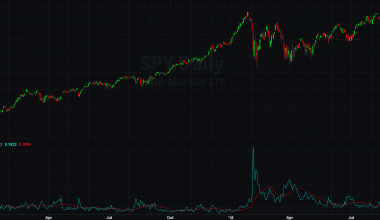The Five Forces Model, developed by economist Michael E. Porter, provides a powerful framework for assessing an industry’s competitiveness and profitability. By examining these forces, businesses can gain valuable insights to formulate effective strategies, identify opportunities, and mitigate risks. In this post, we explore the concept of the Five Forces Model and its significance in today’s dynamic business environment. We discuss how this model enables organizations to evaluate the competitive intensity and make informed decisions to gain a strategic advantage.
Understanding Porter’s Five Forces Competitive Model
Generally, the Five Forces model is a tool for analysis and strategic decision-making. It provides a systematic framework to understand industry dynamics, identify competitive threats and opportunities, and guide strategic actions for long-term success. The Porter Five Forces Model serves as a valuable tool in strategic management, enabling businesses to analyze their industry, understand competitive forces, identify opportunities and threats, and formulate effective strategies to achieve long-term success. Michael Porter, a renowned strategy professor, developed Porter’s Five Forces Model as a framework for examining the competitive dynamics of an industry. It helps assess the attractiveness and profitability of an industry by examining five key forces that shape its competitive environment.
The following is a breakdown of the model:
#1. The Threat of New Entrants
This force examines the ease or difficulty of new competitors entering the industry. Factors such as barriers to entry, economies of scale, capital requirements, access to distribution channels, and government regulations play a role. A higher threat of new entrants implies reduced profitability for existing players.
#2. Bargaining Power of Suppliers
This force assesses the power of suppliers to influence prices and terms of supply. The factors to consider include the number of suppliers, the uniqueness of their products or services, the availability of substitutes, switching costs, and their ability to integrate. Strong supplier power can limit industry profitability.
#3. Bargaining Power of Buyers
This force focuses on the power of customers to influence prices and demand conditions. Factors to consider include the concentration of buyers, their price sensitivity, product differentiation, switching costs, and the availability of substitute products. Strong buyer power can reduce industry profitability.
#4. The Threat of Substitute Products or Services
This force analyzes the likelihood of customers switching to alternative products or services. Factors to consider include availability, price-performance ratio, and switching costs associated with substitutes. The higher the threat of substitutes, the more challenging it is for companies to maintain their market share and profitability.
#5. The Intensity of Competitive Rivalry
This force examines the level of competition among existing industry players. Factors to consider include the number and size of competitors, industry growth rate, product differentiation, fixed costs, capacity utilization, and exit barriers. Intense rivalry can lead to price wars and reduced profitability.
What Are Porter’s Five Forces Used For?
Organizations use the Porter Five forces competition model to comprehend the competitive landscape of their industry and make wise strategic decisions. The analysis helps identify opportunities, threats, and areas where competitive advantage can be built or sustained.
Is Porter’s Five Forces Model Still Relevant?
Yes, it is. Although the model has faced a lot of criticism, it’s still a useful business tool for spotting competitive pressures in a certain market or industry.
What Are the Five Forces Models?
- Competitive Rivalry.
- Supplier Power.
- Buyer Power.
- The threat of Substitution.
- The threat of New Entry.
How to Use the Five Force Model
To use the Five Forces model effectively, follow these steps:
- Identify the industry: Define the specific industry or market you want to analyze.
- Identify the relevant players: Identify the key competitors, suppliers, and buyers in the industry.
- Analyze each force: Evaluate the strength and impact of each force on the industry. Assess the factors that influence each force and determine their overall effect on industry profitability.
- Determine the overall industry attractiveness: Based on the analysis of the five forces, assess the overall attractiveness and profitability of the industry. Industries with the overall attractiveness of the entry barrier and buyer power, few substitute products, and moderate competitive rivalry are generally more attractive.
- Strategic implications: Based on the insights gained, develop appropriate strategies to capitalize on opportunities or mitigate threats. This may involve leveraging strengths, creating barriers to entry, developing supplier or buyer relationships, differentiating products, or pursuing market expansion or consolidation.
Porter’s Five Forces Model in Strategic Management
The Porter Five Forces Model is widely used in strategic management to analyze the competitive dynamics of an industry and guide decision-making. It helps businesses understand the attractiveness and profitability of an industry by examining five key forces. Let’s explore how the model is applied in strategic management:
#1. Industry Analysis
The Five Forces Model serves as a tool for industry analysis. It provides a structured framework to assess the competitive forces and understand the dynamics at play. By analyzing each force and its impact, businesses gain insights into the overall competitiveness of the industry, the potential threats they face, and the opportunities available.
#2. Assessing Competitive Position
The model helps businesses assess their competitive position within the industry. By understanding the intensity of rivalry, the power of suppliers and buyers, and the threat of new entrants and substitutes, companies can identify their relative strengths and weaknesses. This assessment guides strategic decision-making, including resource allocation, market positioning, and competitive advantage development.
#3. Identifying Strategic Opportunities and Threats
Through the analysis of each force, businesses can identify strategic opportunities and threats. For example, a low barrier to entry may present an opportunity for new market entrants, while the high bargaining power of suppliers may pose a threat to profitability. By recognizing these factors, companies can adapt their strategies to leverage opportunities and mitigate threats effectively.
#4. Formulating Competitive Strategies
Porter’s Five Forces Model aids in the formulation of competitive strategies. By understanding the forces at play, businesses can develop strategies to enhance their competitive advantage. For instance, they can focus on differentiation to reduce the threat of substitutes or build strong supplier relationships to minimize supplier power. The model helps align strategies with the specific competitive dynamics of the industry.
#5. Industry Attractiveness Assessment
The model helps assess the attractiveness of an industry. Industries with low barriers to entry, weak supplier and buyer power, few substitutes, and moderate competitive rivalry are generally more attractive and offer greater opportunities for profitability. Evaluating industry attractiveness assists businesses in making decisions related to market entry, expansion, diversification, or divestment.
#6. Long-term Planning
Strategic management involves long-term planning, and Porter’s Five Forces Model provides a foundation for such planning. It helps businesses anticipate and prepare for changes in the competitive landscape. By continuously monitoring and reassessing the forces, organizations can adjust their strategies and remain competitive in dynamic markets.
Porter 5 Forces Example
Let’s consider an example of Porter’s Five Forces Model applied to the smartphone industry:
#1. The Threat of New Entrants
The smartphone industry has high barriers to entry. It requires significant capital investment, access to technology and patents, strong distribution networks, and established brand recognition. Companies like Apple, Samsung, and Huawei have already established their dominance, making it challenging for new entrants to gain a significant market share.
#2. Bargaining Power of Suppliers
Suppliers in the smartphone industry, such as semiconductor manufacturers, display panel producers, and component suppliers, hold significant power due to their specialized products. However, large smartphone manufacturers have the advantage of bulk purchasing and long-term contracts, enabling them to negotiate favorable pricing and terms.
#3. Bargaining Power of Buyers
Buyers in the smartphone industry have substantial bargaining power due to the numerous available options and high price sensitivity. Customers can easily switch between brands based on price, features, and user experience. This forces smartphone manufacturers to constantly innovate, differentiate their products, and offer competitive pricing to retain customers.
#4. The Threat of Substitute Products or Services
The threat of substitutes in the smartphone industry is moderate. While there are no direct substitutes for smartphones, other devices such as tablets, laptops, and wearable tech can fulfill similar functions. However, smartphones have become an integral part of daily life for many consumers, reducing the immediate threat of substitution.
#5. The Intensity of the Competitive Rivalry
The smartphone industry is highly competitive, with fierce rivalry among major. Companies compete based on product features, design, brand reputation, ecosystem integration, and marketing efforts. Apple, Samsung, Xiaomi, and other companies constantly launch new models, engage in aggressive marketing campaigns, and engage in patent battles, leading to fierce competition and price pressures.
What Is the Main Objective of the 5 Forces Model?
The main objective of the Five Forces model developed by Michael Porter is to analyze the competitive dynamics of an industry and understand its attractiveness and profitability.
What Are the Advantages of the Five Forces Model?
The following are some of the key advantages:
- Industry Analysis
- Identification of Competitive Forces
- Strategic Insights
- Decision Making
- Risk Assessment
- Long-term Planning
- Communication and Collaboration
What Is Known as the Most Powerful of the Five Forces Model?
According to Porter, Rivalry among competing firms is usually the most powerful of the five competitive forces.
Is Porter’s 5 Forces Internal or External?
The five forces model includes all external factors that affect a business’s performance.
- BARGAINING POWER OF SUPPLIERS: What It Is & How It Works
- Marketing Environment: Definition, Concept & Best Practices (+ Case Studies)
- Competitor Analysis: All you need (+ How to Start Guide)






